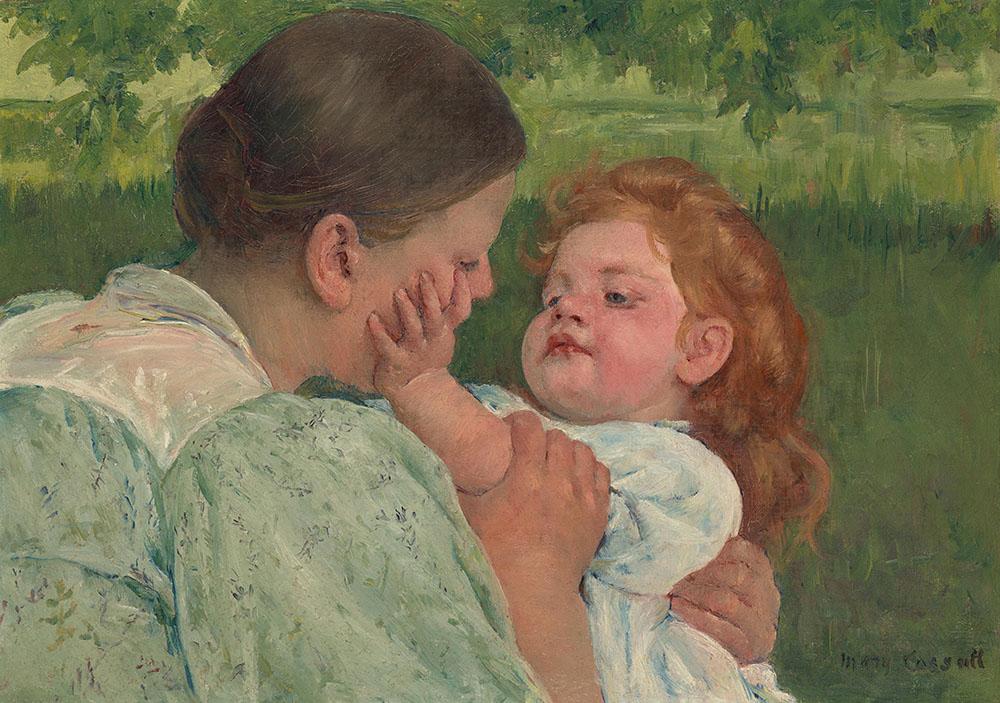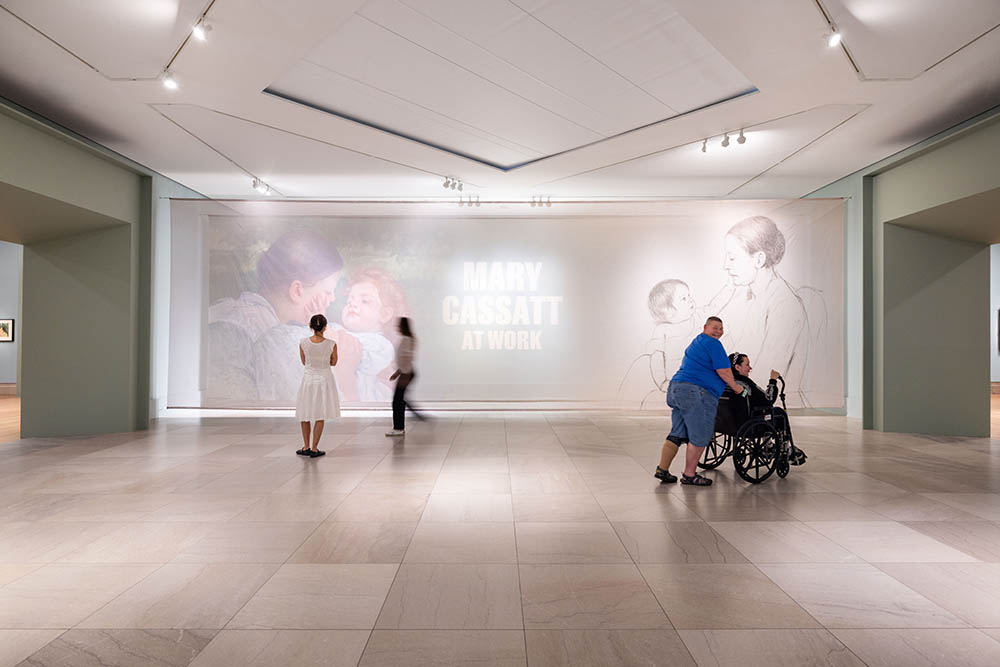
Perched atop a grassy hill overlooking the Golden Gate Bridge on San Francisco’s northwest side, the Legion of Honor is housed in a stately beaux-arts building that beautifully complements the 4,000 years of ancient and European art you’ll find inside. This year, the beloved San Francisco institution is celebrating its centennial—and it’s treating us to a very special exhibition: Mary Cassatt at Work.
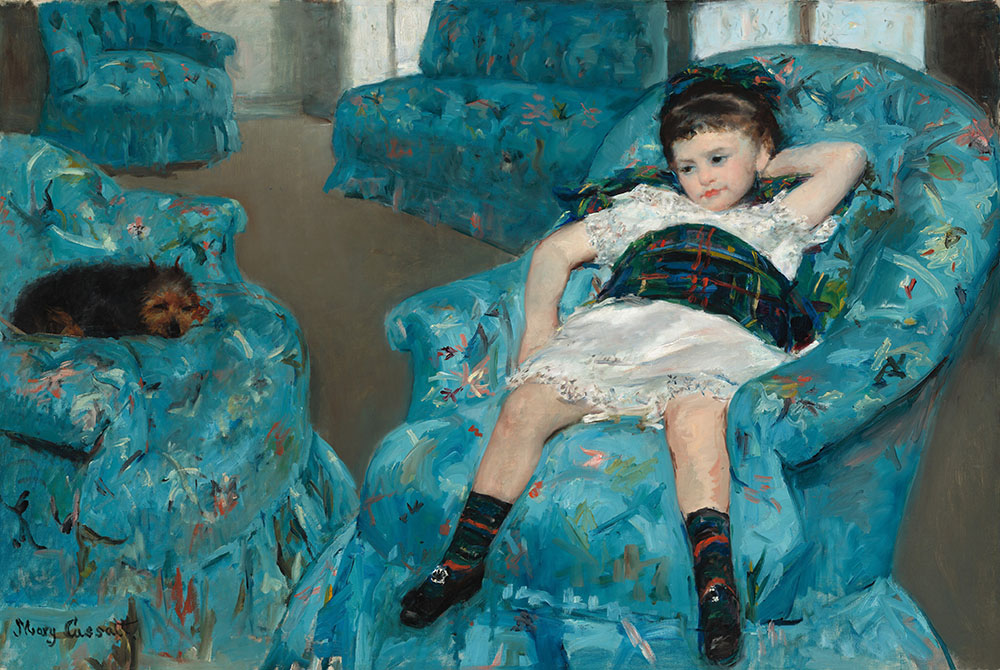
Who was Mary Cassatt?
Mary Cassatt (1844-1926) was a Modernist pioneer and member of the French Impressionist movement who’s often dismissed as a sentimental painter of mothers and children. Her paintings, pastels, and prints often depicted upper-middle-class life, showing women at the opera, talking with friends, or having tea. But Cassatt’s art also portrayed “women’s work”—including needlepoint, child-rearing, and domestic tasks—deeming it worthy of serious artistic consideration while her peers were painting landscapes and pastoral scenes from everyday life.
Under the guise of acceptably feminine imagery, Cassatt snuck in subtle experimentation with both the subject matter of her art and the processes she employed to create it. She purposefully called attention to the methods of her artmaking and the iterative approach she took to reach the final product, which the exhibition at Legion of Honor highlights beautifully.
About the exhibition
Mary Cassatt at Work is the first major U.S. presentation of Cassatt’s work in more than 25 years, organized by the Philadelphia Museum of Art in collaboration with the Fine Art Museums of San Francisco.
The exhibition delves into Cassatt’s materials and processes over 50 years of artmaking, showing 93 objects on loan plus a group of distinguished works from the Fine Arts Museums’ collection. You don’t want to miss this one!
Get a taste of what’s to come
The exhibition is split into five galleries, each tailored to a central theme of Mary Cassatt’s artwork and artistic process. Take a stroll through the museum with us as we give you a glimpse into each gallery.

Impressionism: Picturing Women
Cassatt’s desire to become a professional artist was met with a lot of resistance from both her family and her social class at large. Nonetheless, she remained intent on developing her artistic career.
Cassatt found her community with the Impressionists—artists like Edgar Degas, Claude Monet, Berthe Morisot, Auguste Renoir, and Camille Pissarro—who broke away from traditional French art institutions and pioneered new approaches to portray scenes from modern life, often rendered with bold strokes of bright, unblended color.
As an affluent woman navigating rigid Parisian society, Cassatt focused her artistic attention on depicting the social lives, intellectual interests, and handiwork of the women she called her peers. Cassatt showed her work with the Impressionists for the first time in 1879, making an impactful debut with her paintings and pastel drawings of upper-middle-class women.
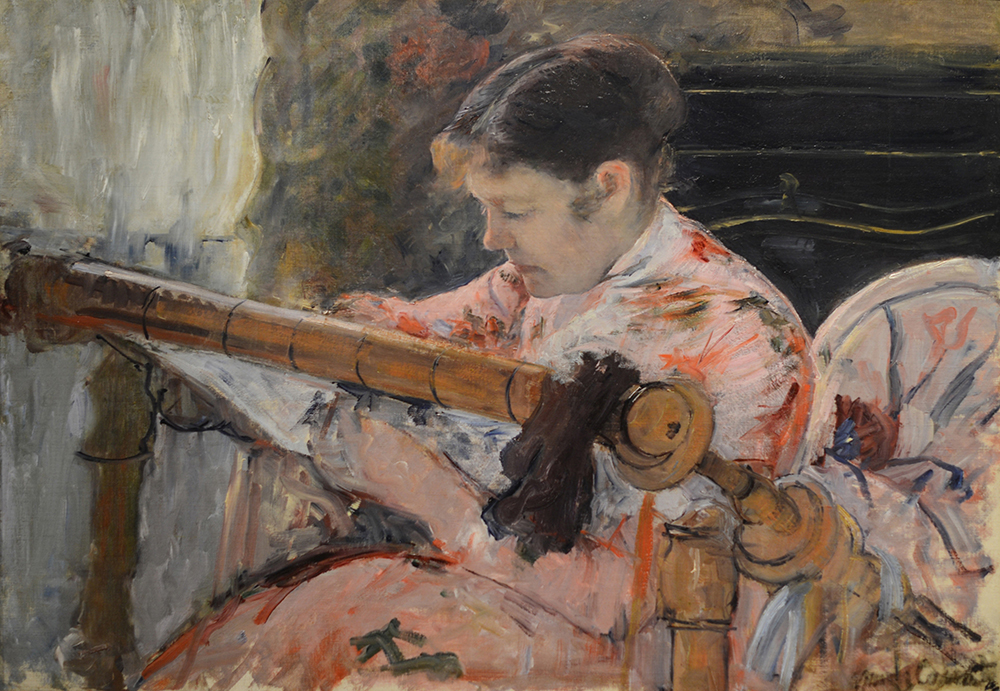

Children and Childcare
Even though Cassatt never had children of her own, she took great interest in portraying the inner lives of children and the relationships they had with their caretakers. Because Cassatt poignantly depicted the physical and psychological work involved in childcare for the first meaningful time in Western art history, she quickly garnered an international reputation—and established a budding market—for her images of women and children.
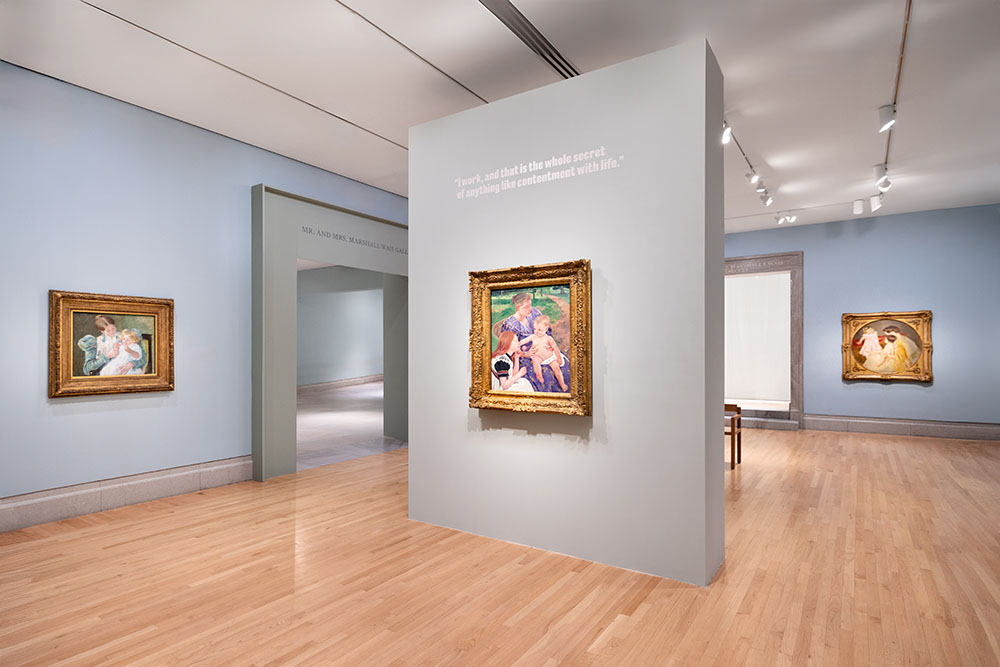
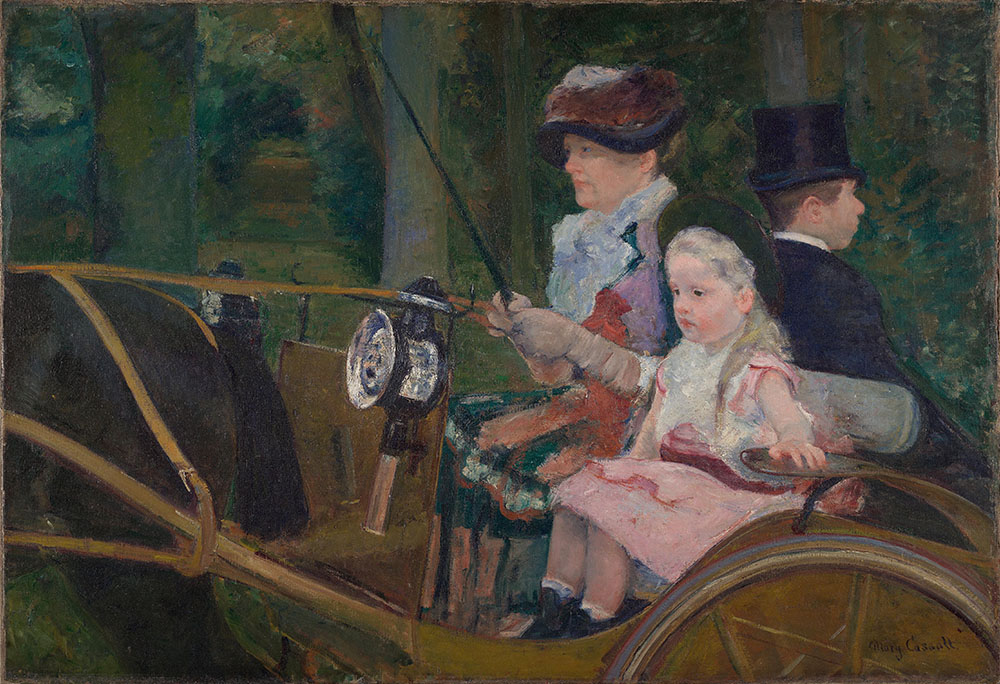
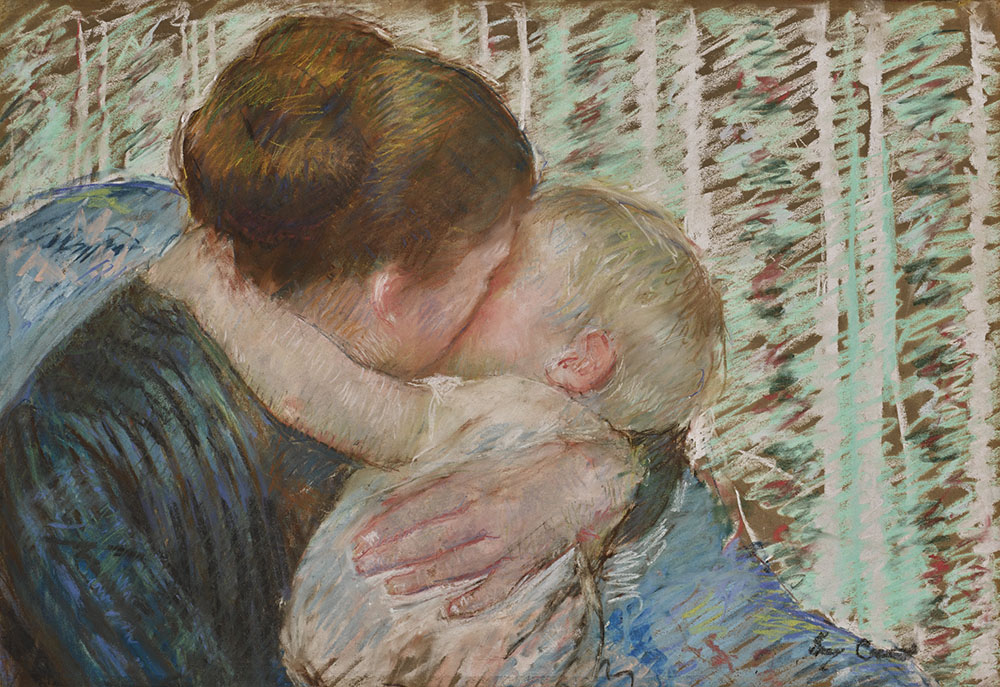
Printing in Color
After attending a Japanese art exhibition in Paris in 1890, Cassatt became enamored with the bright colors, dynamic patterns, and everyday scenes of Japanese woodblock prints. She was determined to reverse engineer these elements in a Western-style intaglio print. The next winter, she created a series of color prints now known as the “Set of Ten,” which drew from Japanese precedents to depict Parisian women’s private lives, from quiet bus rides to nighttime bath rituals.
Cassatt worked closely with the master printer Modeste Leroy to invent a new method of printing in color, resulting in some of the most inventive and technically adventurous works in the history of modern printmaking.
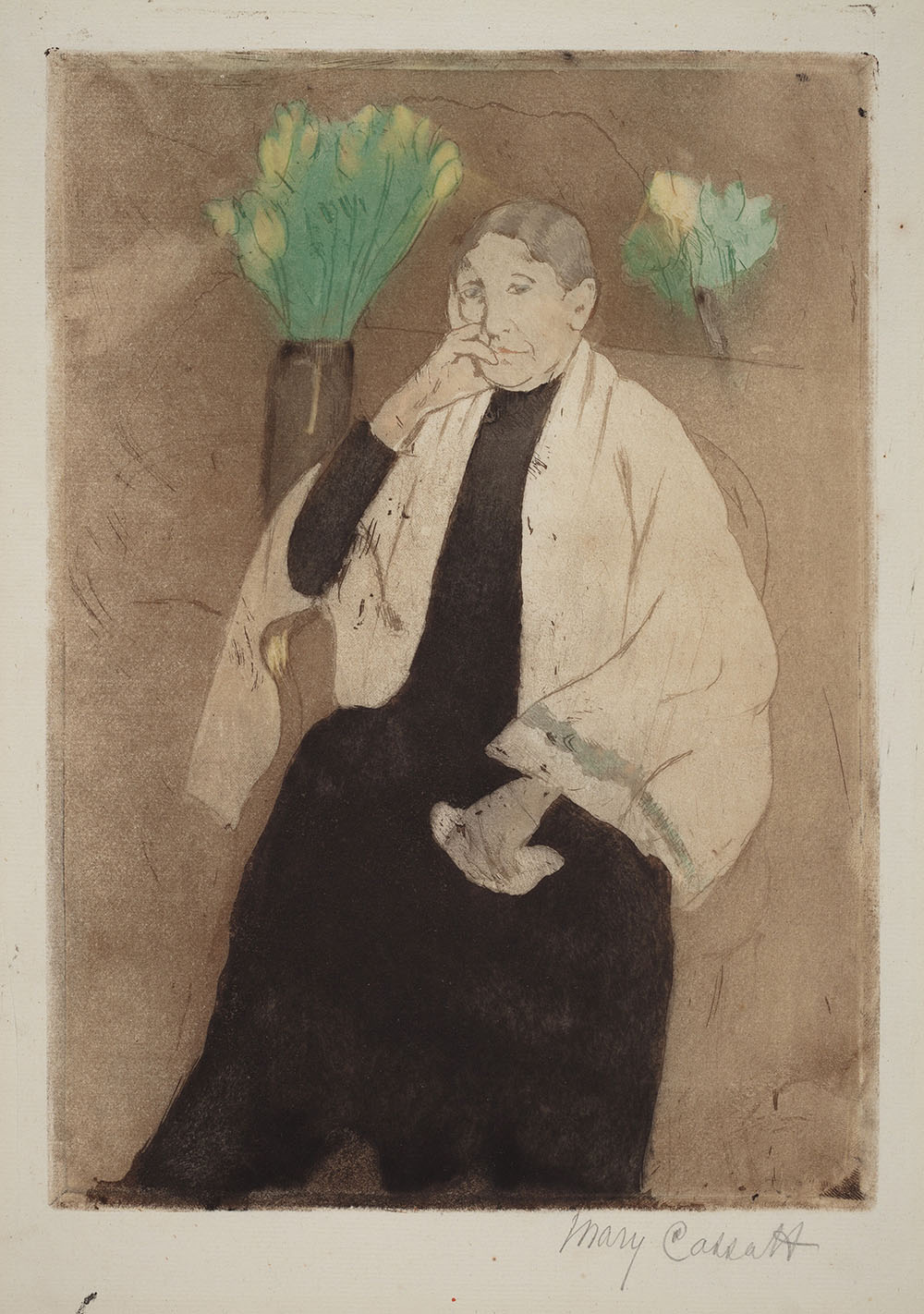
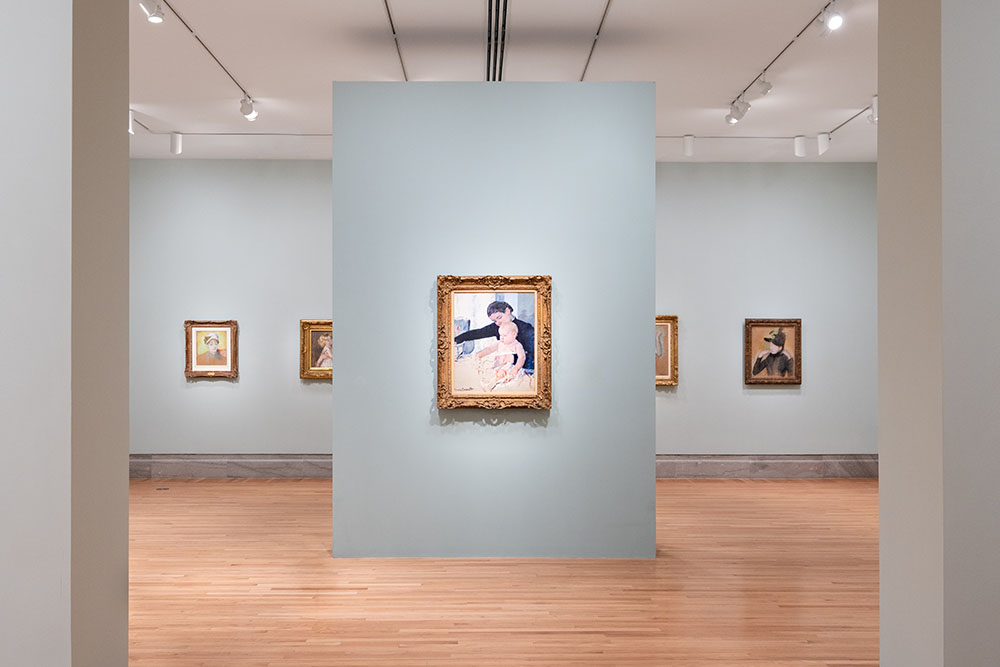
Finished/Unfinished
Cassatt loved to lay her process bare in her color prints, paintings, and pastel drawings. This gallery highlights the artist’s endless experimentation and her desire to document the artistic process in addition to the final product.


The “Modern Madonna”
During the last 15 years of her life, Cassatt became increasingly focused on creating artwork about women and children. This mother-and-child imagery helped Cassatt start a conversation around Old Master precedents—specifically, the religious images of the Madonna and Christ Child depicted by Italian Renaissance masters.
But Cassatt’s ability to create endlessly varied compositions from this theme also connects her late work to fellow Impressionists Claude Monet and Paul Cézanne, who treated the same subjects (water lilies and apples, respectively) again and again.
Event details:
Where: Legion of Honor (100 34th Ave., San Francisco, CA 94121)
When: Oct. 5, 2024-Jan. 26, 2025
Hours: 9:30 am-5:15 pm, Tuesday through Sunday; Closed on Mondays
Tickets: $20 for adults, $17 for seniors (65+), $11 for students (w/ valid ID), Free for youth (17 and under) and Legion of Honor members
Pro tip: Skip the line and book your tickets online.
